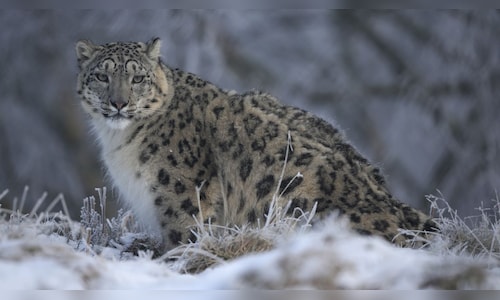The snow leopard (biological name Panthera uncia) is recognized as the top predator of the trans-Himalayan region and has cultural significance in the folklore and traditions of the Himalayan communities that coexist with it.
In 2008, the Government of India started the Snow Leopard Project, to conserve and protect high-altitude wildlife and their habitat through conservation policies.
Also read: There is a new hotspot in Arunachal Pradesh that has significant tourism potential
The project recognizes the connection between the unique cultures and livelihoods of mountain communities and the landscape they inhabit, emphasizing their role in conservation efforts.
In Arunachal Pradesh, cat species like the snow leopard are considered symbols associated with spiritual importance among many tribes. Violation of the hunting taboos of these carnivores often carries severe social sanctions. Despite having more than 15,000 square kilometers of potential snow leopard habitat, the region has been largely unexplored from a wildlife research and conservation perspective.
Also read: Adventure tourism: Is India ready to be the next global destination?
The DoEFCC initiated the population assessment project in 2021, which highlights the challenge posed by the rugged and inaccessible terrain typical of snow leopard habitat.
The study is innovative for its comprehensive approach to assessing the snow leopard population across potential habitat. Using advanced simulation techniques, the project was executed through extensive field work involving state forest department staff. From June 24 to December 9, 2021, camera trapping was conducted at 115 locations and interviews were conducted at 160 sites to assess snow leopard presence and threats to its habitat.
Surprisingly, more than 80% of those interviewed confirmed having seen snow leopards. The investigation revealed that the main threats include accidental killings and entrapment, particularly in districts such as West Kameng and Tawang, where retaliatory killings also pose significant risks. Additionally, large-scale infrastructure development and free-ranging dogs were identified as serious threats to wildlife in these high elevation areas.
(Edited by: Jerome Antonio)
Disclaimer:
The information contained in this post is for general information purposes only. We make no representations or warranties of any kind, express or implied, about the completeness, accuracy, reliability, suitability or availability with respect to the website or the information, products, services, or related graphics contained on the post for any purpose.
We respect the intellectual property rights of content creators. If you are the owner of any material featured on our website and have concerns about its use, please contact us. We are committed to addressing any copyright issues promptly and will remove any material within 2 days of receiving a request from the rightful owner.

